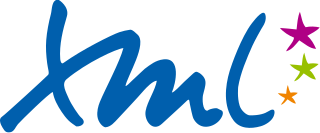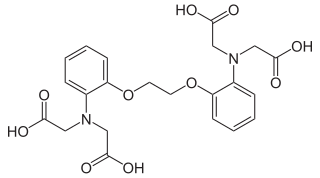History and rationale
The CALS Table Model was developed by the Continuous Acquisition and Life-cycle Support (CALS) Industry Steering Group Electronic Publishing Committee (EPC).
The EPC subcommittee, of which Harvey Bingham was co-chair and a major contributor, designed the CALS Table Model in 1989–1990. The EPC was made up of industry and military service representatives. Some represented traditional military document printing agencies. Others represented electronic publishing organizations. SGML itself was new. At that time, the CALS intent for all their technical manuals was to use that document type definition (DTD) to achieve system-neutral interchange of content and structure.
Its basis was a minimal description and example of a table from the prior Mil-M-38784B specification for producing technical manuals. The incomplete specification of the semantics associated with the table model allowed too much freedom for vendor interpretation, and resulted in problems with interchange. SGML-Open, the former name of the Organization for the Advancement of Structured Information Standards (OASIS), surveyed the implementing vendors to identify differences as the initial step toward reaching a common interpretation. The next step was an updated CALS Table Model DTD and semantics. Both are now available from OASIS. [1]
As implementations of the CALS Table Model were developed, a number of ambiguities and omissions were detected and reported to the EPC. The differences in interpretation had led to serious interoperability problems. To resolve these differences, OASIS identified a subset of the full CALS table model that had a high probability of successful interoperability among the OASIS vendor products. This subset is the Exchange Table Model DTD. [2]
A document type definition (DTD) is a specification file that contains set of markup declarations that define a document type for an SGML-family markup language. The DTD specification file can be used to validate documents.

Hypertext Markup Language (HTML) is the standard markup language for documents designed to be displayed in a web browser. It defines the content and structure of web content. It is often assisted by technologies such as Cascading Style Sheets (CSS) and scripting languages such as JavaScript, a programming language.

The Standard Generalized Markup Language is a standard for defining generalized markup languages for documents. ISO 8879 Annex A.1 states that generalized markup is "based on two postulates":

Extensible Markup Language (XML) is a markup language and file format for storing, transmitting, and reconstructing arbitrary data. It defines a set of rules for encoding documents in a format that is both human-readable and machine-readable. The World Wide Web Consortium's XML 1.0 Specification of 1998 and several other related specifications—all of them free open standards—define XML.
DocBook is a semantic markup language for technical documentation. It was originally intended for writing technical documents related to computer hardware and software, but it can be used for any other sort of documentation.
Mathematical Markup Language (MathML) is a mathematical markup language, an application of XML for describing mathematical notations and capturing both its structure and content, and is one of a number of mathematical markup languages. Its aim is to natively integrate mathematical formulae into World Wide Web pages and other documents. It is part of HTML5 and standardised by ISO/IEC since 2015.
The Organization for the Advancement of Structured Information Standards is a nonprofit consortium that works on the development, convergence, and adoption of projects - both open standards and open source - for Computer security, blockchain, Internet of things (IoT), emergency management, cloud computing, legal data exchange, energy, content technologies, and other areas.
An HTML element is a type of HTML document component, one of several types of HTML nodes. The first used version of HTML was written by Tim Berners-Lee in 1993 and there have since been many versions of HTML. The current de facto standard is governed by the industry group WHATWG and is known as the HTML Living Standard.

BAPTA (1,2-bis(o-aminophenoxy)ethane-N,N,N′,N′-tetraacetic acid) is a calcium-specific aminopolycarboxylic acid. The presence of four carboxylic acid functional groups makes possible the binding of two calcium ions. The extensive flexibility of the carboxylate ligands is critical to the coordination of calcium and other metal ions. Due to its properties, it is used in research to chelate Ca2+, similarly to EGTA and EDTA.
Universal Business Language (UBL), ISO/IEC 19845, is an open library of standard electronic business documents and information models for supply chain, procurement, and transportation such as purchase orders, invoices, transport logistics and waybills. Originally developed by an OASIS Technical Committee with participation from a variety of industry data standards organizations. UBL is designed to plug directly into existing business, legal, auditing, and records management practices. It is designed to streamline information exchange through standardization, facilitating seamless connections between small, medium-sized, and large organization, thereby eliminating the re-keying of data and providing a comprehensive framework for electronic commerce.
TRON Code is a multi-byte character encoding used in the TRON project. It is similar to Unicode but does not use Unicode's Han unification process: each character from each CJK character set is encoded separately, including archaic and historical equivalents of modern characters. This means that Chinese, Japanese, and Korean text can be mixed without any ambiguity as to the exact form of the characters; however, it also means that many characters with equivalent semantics will be encoded more than once, complicating some operations.

Diphosphines, sometimes called bisphosphanes, are organophosphorus compounds most commonly used as bidentate phosphine ligands in inorganic and organometallic chemistry. They are identified by the presence of two phosphino groups linked by a backbone, and are usually chelating. A wide variety of diphosphines have been synthesized with different linkers and R-groups. Alteration of the linker and R-groups alters the electronic and steric properties of the ligands which can result in different coordination geometries and catalytic behavior in homogeneous catalysts.

Diphenylphosphine, also known as diphenylphosphane, is an organophosphorus compound with the formula (C6H5)2PH. This foul-smelling, colorless liquid is easily oxidized in air. It is a precursor to organophosphorus ligands for use as catalysts.
A Formal Public Identifier (FPI) is a short piece of text with a particular structure that may be used to uniquely identify a product, specification or document. FPIs were introduced as part of Standard Generalized Markup Language (SGML), and serve particular purposes in formats historically derived from SGML. Some of their most common uses are as part of document type declarations (DOCTYPEs) and document type definitions (DTDs) in SGML, XML and historically HTML, but they are also used in the vCard and iCalendar file formats to identify the software product which generated the file.
Extensible HyperText Markup Language (XHTML) is part of the family of XML markup languages which mirrors or extends versions of the widely used HyperText Markup Language (HTML), the language in which Web pages are formulated.
Content Management Interoperability Services (CMIS) is an open standard that allows different content management systems to inter-operate over the Internet. Specifically, CMIS defines an abstraction layer for controlling diverse document management systems and repositories using web protocols.
Thymeleaf is a Java XML/XHTML/HTML5 template engine that can work both in web (servlet-based) and non-web environments. It is better suited for serving XHTML/HTML5 at the view layer of MVC-based web applications, but it can process any XML file even in offline environments. It provides full Spring Framework integration.
A document type declaration, or DOCTYPE, is an instruction that associates a particular XML or SGML document with a document type definition (DTD). In the serialized form of the document, it manifests as a short string of markup that conforms to a particular syntax.

trans-Bis(dinitrogen)bis[1,2-bis(diphenylphosphino)ethane]molybdenum(0) is a coordination complex with the formula Mo(N2)2(dppe)2. It is a relatively air stable yellow-orange solid. It is notable as being the first discovered dinitrogen containing complex of molybdenum.






